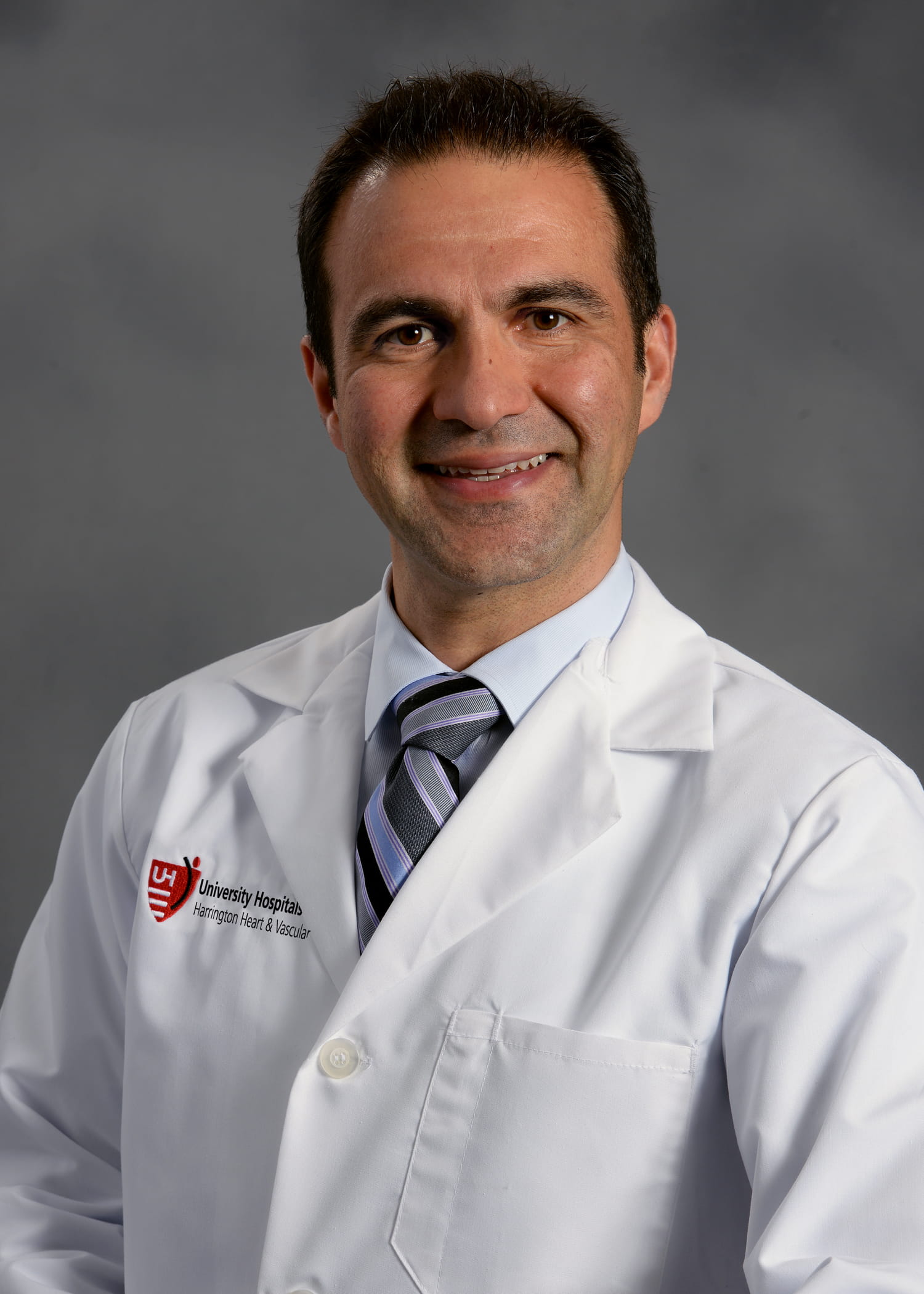Modern Management of Pulmonary Embolism
September 14, 2018
PE response team provides real-time, multidisciplinary consultation
Innovations in Pulmonology & Sleep Medicine - Fall 2018
 Robert J. Schilz, DO, PhD, FCCP
Robert J. Schilz, DO, PhD, FCCP Mehdi H. Shishehbor, DO, MPH, PhD
Mehdi H. Shishehbor, DO, MPH, PhD
“Increasingly, modern research gives us new technical options to treat PE and reduce some of the mortality and associated morbidities,” says Robert J. Schilz, DO, PhD, Director, Pulmonary Vascular Disease Program, Division of Pulmonary, Critical Care and Sleep Medicine, University Hospitals Cleveland Medical Center, Co-director, Lung Transplantation, University Hospitals Cleveland Medical Center; Associate Professor, Medicine, Case Western Reserve University School of Medicine.
Just as importantly, clinicians also increasingly recognize the importance of providing multidisciplinary services to care for patients with PE. “Having the skill, expertise and experience in knowing when and how to use these techniques and how to manage these patients is critical,” Dr. Schilz says. “We are leading the way in some of the most advanced technologies that can save lives and reduce the long-term manifestations of PE,” says Mehdi H. Shishehbor, DO, MPH, PhD, Director, Interventional Cardiovascular Center, and Co-Director, Vascular Center, University Hospitals Harrington Heart & Vascular Institute; Professor, Medicine, Case Western Reserve University School of Medicine
One solution has been the formation of a Pulmonary Embolism Response Team (PERT). The team formed at University Hospitals is one of several nationwide that is part of a national PERT Consortium to guide and influence PE care.
The variability in PE care has been recognized as a factor that can potentially compromise the care clinicians offer patients,” Dr. Schilz says. “The standardization and use of a single team with dedicated expertise would help decrease the variability, streamline practice, serve as a platform for education research and also rapidly mobilize resources to care for critically ill patients.
At UH, the multidisciplinary PERT includes experts in cardiovascular medicine and surgery, pulmonology, critical care as well as other disciplines as needed.
“The goal of PERT is to provide real-time, actual or virtual multidisciplinary consultation to review initial data and draw up a treatment plan in conjunction with the referring physician or team for managing pulmonary embolism,” Dr. Shishehbor says.
BENEFITS OF PERT
Dr. Schilz describes several ways the UH PERT is improving care for patients with pulmonary embolisms.
Benjamin Medalion, MD, Director, Mechanical Circulatory Support, UH Cleveland Medical Center, Extra Corporeal Membrane Oxygenation (ECMO) provides sophisticated mechanical support for critically ill patients in shock. ECMO serves as a heart-lung bypass machine until patients are stabilized.
“This represents both a unique and advanced therapy not available in almost any hospital other than a quaternary referral center like UH,” Dr. Schilz says.
Interventional techniques. “We have an increasing armamentarium of minimally invasive techniques that allow for the removal or dissolution of clots in the lungs,” Dr. Schilz says. These innovative, catheter-based techniques have been developed by a national group of experts, including Dr. Shishehbor, who recently joined the UH system.
“Knowing when to do these procedures also remains a critical function of the PE team,” Dr. Schilz says. “To be able to mobilize the resources to have the intervention available and performed in a timely manner remains key to treating critically ill patients in a life-threatening situation.”
The members of the cardiothoracic team are also skilled at surgically removing blood clots in the operating room for those patients who might need this procedure, he adds.
Removal of inferior vena cava filters. Although an older intervention, inferior vena cava filters, which catch clots from the lower extremities before they reach the lungs, also play a role in the prevention of pulmonary embolism in some patients.
“We occasionally use these filters as an adjunct to treatment,” Dr. Shishehbor explains. “We have the ability to place them and then to retrieve them when they are no longer needed. Follow-up clinics provide a platform to reassess the need for these optional and retrievable devices and to ensure we retrieve them in a timely manner, when and if it’s appropriate.”
TO MAKE A REFERRAL
PERT is part of UH’s approach to treating disorders of the blood vessels in the lungs. In addition to pulmonary embolism, this includes other pulmonary vascular conditions, such as pulmonary hypertension and vascular arterial malformations.
PERT consultation is available throughout the UH system and region through the UH Transfer Center at (216) 844-1111 or, on the main campus, at 6-PERT.
For questions about the latest advancements in the treatment of patients with pulmonary embolism, please email Robert.Schilz@UHhospitals.org or Mehdi.Shishehbor@UHhospitals.org.

